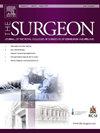来自掠夺性期刊的不请自来的电子邮件:一个早期职业外科实习生的观点。
IF 2.3
4区 医学
Q2 SURGERY
Surgeon-Journal of the Royal Colleges of Surgeons of Edinburgh and Ireland
Pub Date : 2025-07-12
DOI:10.1016/j.surge.2025.07.002
引用次数: 0
摘要
背景:开放获取(OA)出版的扩散伴随着不请自来的学术信件的增加,这些信件通常来自所谓的“掠夺性”出版商。早期职业外科医生可能特别容易受到掠夺性期刊的影响,因为他们迫于压力要发表文章,以便通过培训进入并获得晋升。本观察性研究旨在描述一名外科实习生在发表一篇论文后收到的未经请求的电子邮件的性质和数量。方法:对作者于2024年9月10日至2024年12月31日收到的所有非应邀电子邮件进行整理和分析。评估电子邮件的来源、期刊/出版商、结构、请求投稿、相关性和相关文章处理费(apc)。如果电子邮件中缺少这些信息,则从期刊和出版商网站上寻找。发表合法性是通过期刊或出版商在Beall潜在掠夺性期刊名单上的存在来评估的,包括开放获取期刊目录(DOAJ)和出版伦理委员会(COPE)。结果:共收到电子邮件264封,其中期刊征文227封。这些期刊代表109个独立期刊,包括44个出版商和10个独立期刊。邮件中有大量的奉承(92.95%)和蹩脚的语法(91.19%)。就合法性而言,87.15% (n = 95)在Beall的名单上,8人(7.3%)是COPE的成员,2人(1.8%)是DOAJ的成员。36.56%的邮件提到了apc, 11.45%的邮件明确说明了apc。平均APC为2006.18美元,中位数APC为1988.5美元。58.7% (n = 64)的期刊收取撤稿费,平均成本为1039.68美元,中位数成本为680.25美元。其余的邮件包括会议邀请(n = 28),编委会邀请(n = 6)和图书章节请求(n = 3)。结论:本研究突出了单次发表后掠夺性期刊邀约的高数量和典型特征。随着外科培训生发表文章的压力越来越大,意识到掠夺性行为是至关重要的。需要透明的审查工具和培训机构的指导,以保障外科培训的学术标准。本文章由计算机程序翻译,如有差异,请以英文原文为准。
Unsolicited emails from presumed predatory journals: An early-career surgical trainee's perspective
Background
The proliferation of open access (OA) publishing has been accompanied by a rise in unsolicited academic correspondence, often originating from so-called “predatory” publishers. Early-career surgeons may be particularly vulnerable to predatory journals due to pressure to publish in order to enter and advance through training. This observational study aims to characterize the nature and volume of unsolicited emails received by a surgical trainee following the publication of a single paper.
Methods
All unsolicited emails received by the author between September 10th 2024 and December 31st 2024, were collated and analysed. Emails were assessed for their origin, journal/publisher, structure, requested contribution, relevance and associated Article Processing Charges (APCs). Where emails lacked this information, it was sought from journal and publisher websites. Publication legitimacy was assessed by the journal or publisher's presence on Beall's list of potential predatory journals, inclusion in the Directory of Open Access Journals (DOAJ) and the Committee on Publication Ethics (COPE).
Results
A total of 264 emails were received, 227 of which were soliciting journal articles. These represented 109 individual journals, comprising 44 publishers and 10 standalone journals. High levels of flattery (92.95 %) and poor grammar (91.19 %) were noted in the emails. In terms of legitimacy, 87.15 % (n = 95) were on Beall's list whereas 8 (7.3 %) were members of COPE and 2 (1.8 %) listed in DOAJ. APCs were mentioned in 36.56 % of emails and clearly stated in 11.45 %. The mean APC was 2006.18 USD, median APC was 1988.5 USD. Withdrawal fees were charged by 58.7 % (n = 64) of journals with a mean cost of 1039.68 USD and median cost of 680.25 USD. The remaining emails included conference invites (n = 28), editorial board invites (n = 6) and book chapter requests (n = 3).
Conclusion
This study highlights the high volume and typical characteristics of predatory journal solicitations following a single publication. With increasing pressure on surgical trainees to publish, awareness of predatory practices is essential. Transparent vetting tools and guidance from training bodies are needed to safeguard academic standards in surgical training.
求助全文
通过发布文献求助,成功后即可免费获取论文全文。
去求助
来源期刊
CiteScore
4.40
自引率
0.00%
发文量
158
审稿时长
6-12 weeks
期刊介绍:
Since its establishment in 2003, The Surgeon has established itself as one of the leading multidisciplinary surgical titles, both in print and online. The Surgeon is published for the worldwide surgical and dental communities. The goal of the Journal is to achieve wider national and international recognition, through a commitment to excellence in original research. In addition, both Colleges see the Journal as an important educational service, and consequently there is a particular focus on post-graduate development. Much of our educational role will continue to be achieved through publishing expanded review articles by leaders in their field.
Articles in related areas to surgery and dentistry, such as healthcare management and education, are also welcomed. We aim to educate, entertain, give insight into new surgical techniques and technology, and provide a forum for debate and discussion.

 求助内容:
求助内容: 应助结果提醒方式:
应助结果提醒方式:


